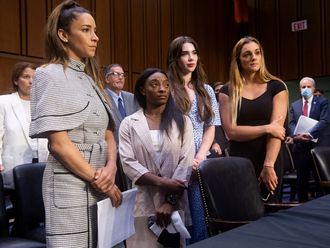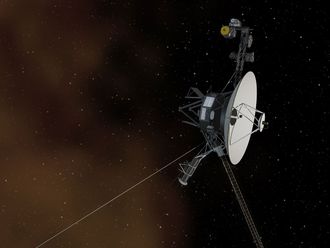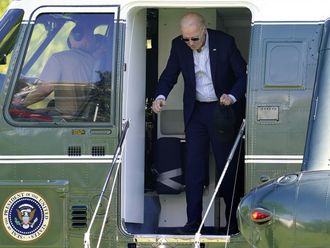Ferguson: The spectacle of American police acting like an occupying army in the St Louis suburb of Ferguson has shocked and baffled outsiders, but there was an explanation, of sorts, in a sleepy, tree-lined street just five minutes’ walk from the mayhem.
Vickie Place is a row of single family homes built in the 1950s. They are modest but spacious, with gardens front and back, plenty of squirrels and a constant buzz from cicadas. The family of Michael Brown, the unarmed 18-year-old African American gunned down by police last Saturday, occupies a cream-coloured house with a peeling door, a broken bell and a tattered chair on the porch.
The teargas and screams from West Florissant Avenue, where mainly white police used military might to cow black protesters, did not reach Vickie Place, just a few blocks away. But a simple fact about the street, and those around it, sheds light on the police mindset: one by one, carload by carload, year by year, decade by decade, in an inexorable, remorseless exodus, white faces, faces like theirs, have vanished. The legacy, for the white officers supposed to police it, appears to be a forbidding, alien, territory. A land of the other. It might as well be Fallujah.
On Saturday the governor Jay Nixon declared a state of emergency and imposed a curfew between midnight and 5am saying the state would not allow a “handful of looters” to endanger the community and that there must be calm if justice is to be served.
“The police don’t like coming here,” said Don Williams, 52, who moved to Vickie Place with his family in 2001. “It was majority white then. Now, almost all black.” The absence of street lighting made everything pitch dark after sunset, intimidating patrols, he said. “We have break-ins but the police barely investigate. They’re not worth nothing.” Opposite the Brown home lives one of the street’s last white residents, Doris McCann, who has lived here for 55 of her 86 years. “It’s a changed neighbourhood. Everyone that’s white moved out,” she lamented.
White flight
White flight is a familiar phenomenon in many countries but the use of armoured vehicles and sniper nests in the height of a Missouri summer has exposed the extent and consequences of segregation in America’s heartland.
For five nights, Saturday to Wednesday, the Ferguson city and St Louis county police departments betrayed hostility, incomprehension and fear as they confronted protesters, heedless that the militarised response had stoked anger and radicalism over Brown’s death.
“I keep my sons shuttered at home because of situations like this. Young black men have targets painted on their backs… this stuff’s been going on for years,” said Kesheara Ross, 26, a protester.
Several factors contributed to the eruption. Brown, it emerged on Friday, had allegedly robbed a convenience store minutes before a police officer, Darren Wilson, apparently shot him several times as he ran away with his arms in the air.
With federal and local investigations under way, the killing’s circumstances remained murky this weekend but there was widespread agreement that the police lost the plot during subsequent peaceful protests. It got so bad Palestinians in Gaza shared tear gas tips with Ferguson’s beleaguered protesters.
Many critics focused on the military equipment. Under a federal programme the Pentagon has offloaded $4.3 billion (Dh15.7 billion) in surplus gear, much of it from Afghanistan and Iraq, to police the US. As Kara Dansky, senior counsel for the American Civil Liberties Union, pointed out, to a hammer everything looks like a nail.
Another factor was racial imbalance: only three of Ferguson’s 53 officers are black (94 per cent white, in other words) and only one of six city councillors is black — a product of disenfranchisement and anaemic political mobilisation in a city where two-thirds of the population is black.
Criticism from Barack Obama and protests across the US, including a rally in New York’s Times Square, prompted Democratic state governor Jay Nixon to put Ron Johnson, a savvy African American captain of the highway patrol, a separate police force, in charge of Ferguson. It worked. On Thursday smiling black officers in uniform replaced the snipers and tear gas. By Friday, when humid heat gave way to cool rain, protesters sang and danced. “This is beautiful. It’s what we’ve been wanting to do all week — make our voices heard,” beamed Shelly Grandford, 34.
But trouble resumed on Friday night when a small group broke away from a peaceful crowd to smash windows, throw bottles and loot the store Brown allegedly robbed, although it was a relatively minor confrontation. By Saturday morning calm had returned.
The sense that the worst had passed, however, masked an enduring problem: most of those in uniform inhabit a different realm to the people they are supposed to serve. Ferguson police chief Thomas Jackson alluded to this when he said there was “a community that is at odds with us now”. He added: “Apparently there is this undertow that has now bubbled to the surface.”
‘Under great deal of stress’
Ferguson’s mayor, James Knowles, who is also white, defended his police officers — the ones who waded in looking like Robocop on steroids. “I’m sure they’re under a great deal of stress, and though it does not make it OK, they are human, and I can understand their frustrations as well,” Knowles said.
The union for St Louis county police was unrepentant about its members’ actions before control was ceded to the highway patrol, defending “the decisions made to control the unlawful and often chaotic moments of the previous days”. It said the move to a softer approach “not only did not improve public safety but put officers’ lives in danger”.
The separation of races should in theory be a fading anachronism given that a black man occupies the White House and black artists suffuse mainstream culture. But half a century after the civil rights movement triumphed, the dream of an integrated multiracial society in this sprawl by the Mississippi is largely dead. As black families moved to nicer areas, exploiting newfound freedom, white neighbours fled. “It was gradual but they all packed up. You’ll find them now in St Charles, Chesterfield, Wildwood, Alton,” said McCann.
The new neighbours were friendly and respectful, but she missed the old days. “It’s ‘how are you ma’am?’ but we don’t know each other, it’s not neighbourly the way it used to be.” In contrast to her black neighbours, McCann had a benign view of the St Louis county police. “In general I assume they do the best they can.”
Ron Goff, 67, a retired postman and perhaps the only other white resident of Vickie Place, had little sympathy for black motorists who cried racism when stopped and fined. “Tyres gone, lights out, no insurance, pieces of junk, that’s why.”
Goff said this during a conversation on the front lawn of his black neighbour and friend, Don Williams. Williams shook his head. To him it was obvious: when it came to the law black people did not get a fair shake. A Washington Post report found that of the black people stopped, 92 per cent ended up arrested. Hence the joke about DWB: driving while black.
A recently arrived reporter for a local broadcaster said she had expected to find a melting pot in the city which had incubated Josephine Baker and Arthur Ashe, among others, only to discover that Delmar Boulevard formed a demarcation line known to all: north of it, 98 per cent of the population is black (median income, $18,000); to the south, 73 per cent white (median income, $50,000).
St Louis is far from the worst case. A study last year, using different measures, ranked parts of Buffalo, New York, Cleveland, Detroit and Milwaukee even more segregated. The alienation cuts both ways. In Ferguson many black residents believe only the worst about police, black or white. Johnson, the highway patrol captain, adroitly defused a tense gathering of youths. He shook hands, listened, engaged, flattered. Johnson was black and grew up in the area but represented a hostile, external force. The youths drifted away, peaceful but not placated. “He may be ice, may be cool, but he’s a cop,” said their leader, who called himself Mike. “It’s the company he keeps.”












